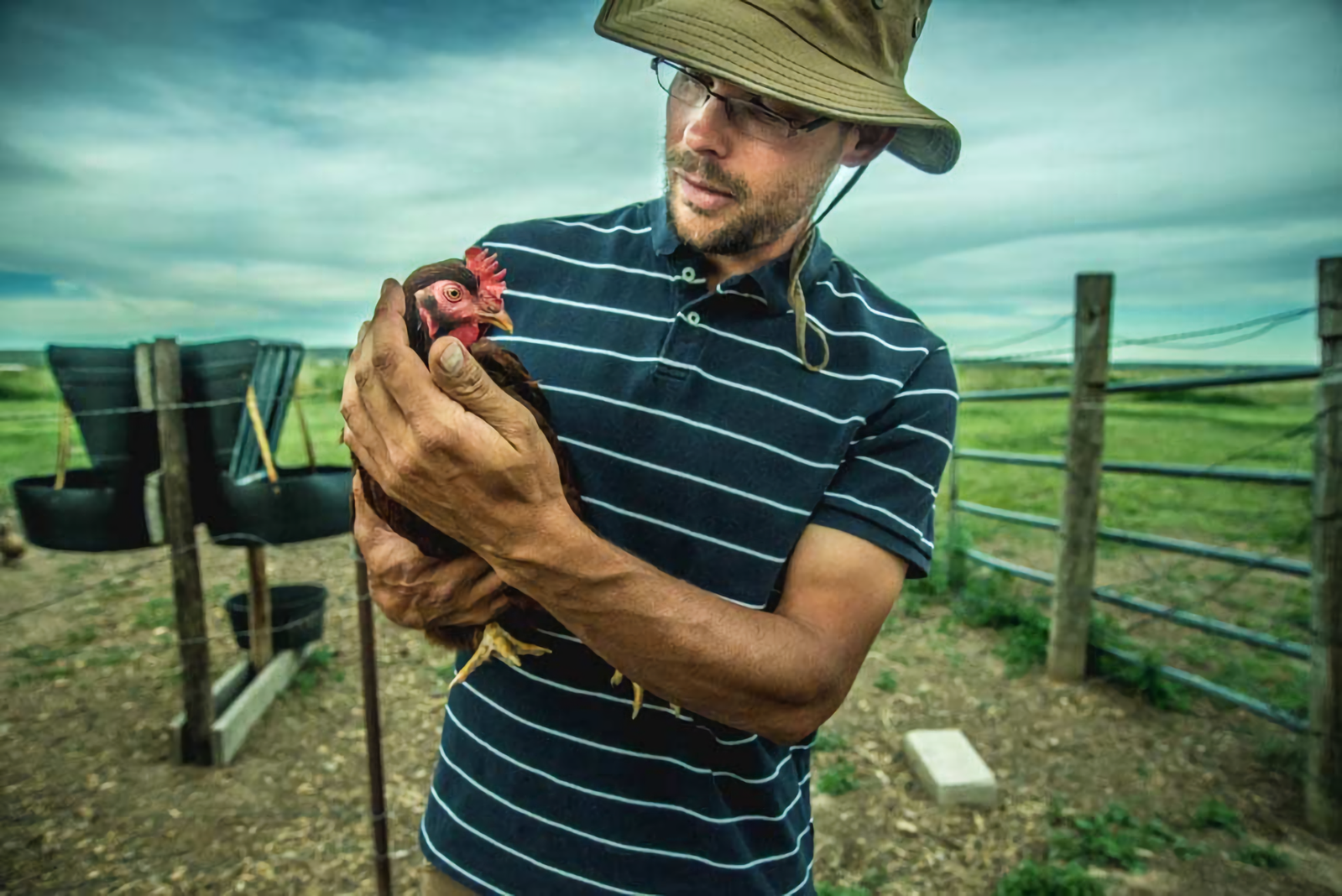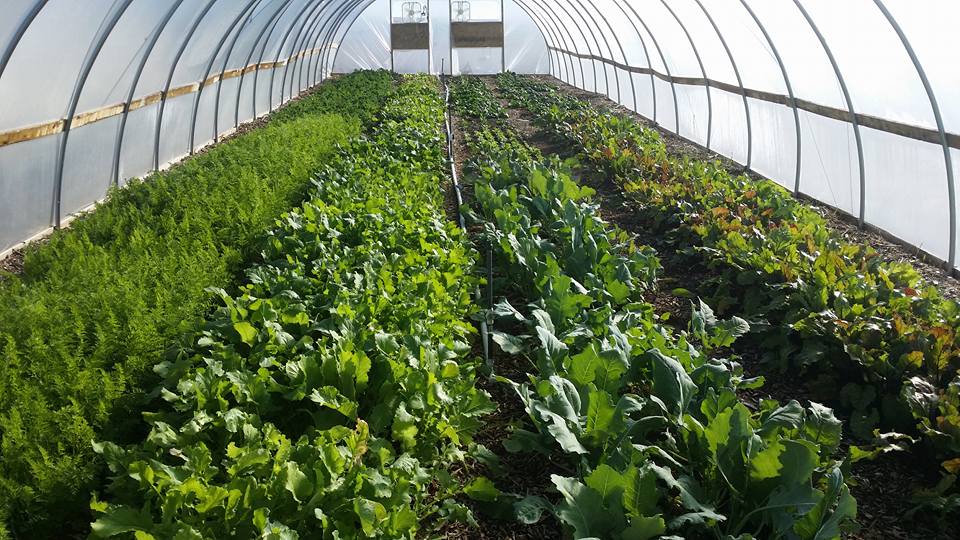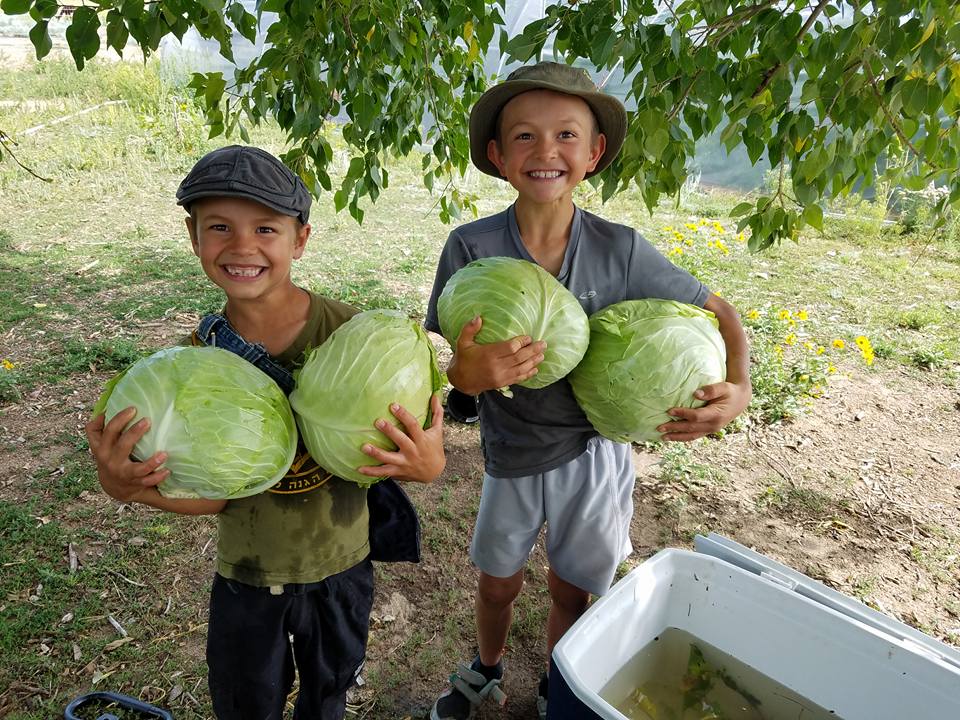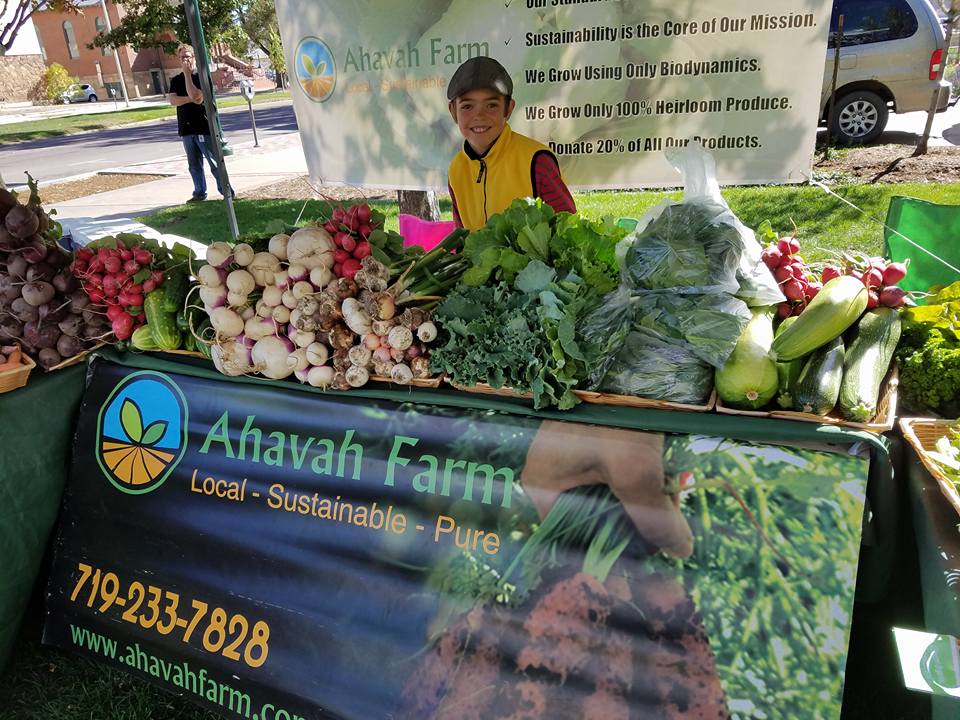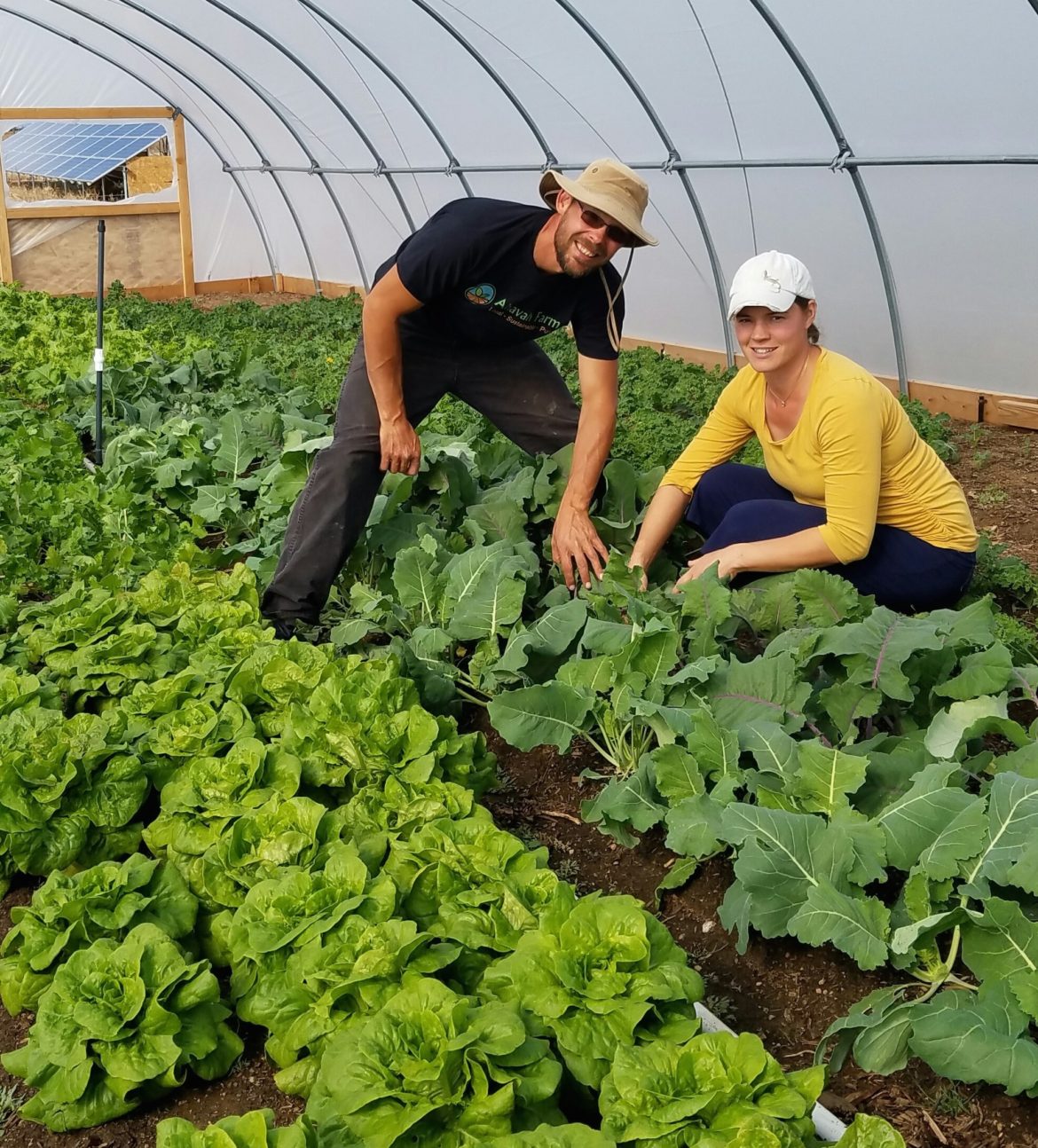From Designing Biomedical Devices to Harvesting Spinach: Interview with Yosef Camire
Author: Rachel Kastner | Published: November 7, 2016
Yosef Camire used to be a biomedical engineer. Today he is pulling beets, harvesting spinach and making compost on his family’s regenerative vegetable farm in Peyton, Colorado, USA. In 2014, Camire and his family founded Ahava Farm because they wanted to have an impact on climate change, land restoration and food security. The farm’s mission is “to produce the purest food possible while creating a positive environmental impact by utilizing biodynamic and sustainable farming practices that benefit our earth, our air and our soil.” The Camire family produces an impressive 40,000 lbs of produce per year on one acre, using regenerative and biodynamic farming methods.
RI recently interviewed Yosef to learn more about his experience as a regenerative farmer, the challenges small-scale farmers face and how we need more regenerative farmers. Ahava Farms is one of the newest members of the Regeneration International Network.
::::::::::::::::::::::::::::::::::::::::::::::::::::::::::::::::::::::::
Interview with Yosef Camire, November 11, 2016
Regeneration International (RI): Tell us why you decided become a regenerative farmer.
Yosef Camire (YC): The only way that I will ever farm is if I can make a difference. This includes making a difference in the lives of people as well as the quality of the environment. Conventional agriculture, or even “sustainable” agriculture just doesn’t make the impact that I am so passionate about making. I don’t want to simply give my children the same land I have now. I want them to have something that is much better, land that has been “regenerated” to something really special.
RI: Can you introduce us to your farm?
YC: We grow 75-plus varieties of heirloom-only produce. This includes everything from carrots to tomatoes, mustard, lettuces, cucumbers, peppers and everything in between. We also have 225 chickens and 30 ducks that we raise for eggs, and a few top-bar beehives that we have for pollination and honey. Finally we have 14 alpacas that we raise specifically for biodiversity and for manure. We also sell their wool.
RI: What makes your farm unique on your area in Colorado?
YC: Sincerely, I am not aware of any farm in Colorado, at least not in our area, that produces as much as we do, and that is doing anything close to what we are doing. I say this regarding everything from our completely 100-percent solar-powered operation and environmentally regenerative practices, to the amount of varieties we grow, to our pay-what-you-can philosophy and more.
RI: Since you didn’t come from an agricultural background, where did you learn the regenerative techniques that you use on your farm?
YC: A lot of reading. I am about 95-percent self-taught through all the books I have read (probably somewhere in the 40-plus range) and the conferences I have attended, like the Quivira Conference in New Mexico. I’ve also learned a lot along the way by making mistakes. This is the hardest way to learn, but it’s the truest learning method if you want to make lasting change. Occasionally a friend may give me pointers or advice here or there, but I’ve also learned a lot by studying my surroundings and engineering my own creative approaches to increasing production and restoring the land, through trial and error.
RI: What is regenerative vegetable farming and how is it different from organic vegetable farming?
YC: The two are like night and day. On the one hand, organic farming is much better than conventional farming because it takes into consideration the health of the person eating the product by excluding the use of GMO seeds and harsh chemicals. The farming practices are superior to conventional agriculture, because in order to succeed, organic farmers generally rotate crops and take better care of the soil. However, regenerative agriculture takes organic and sustainable agriculture much further. Not only do regenerative farmers take into account all of above, but they also take into account things like the environment, climate change, the watershed and the soil to a much greater degree than organic farmers do.. Our goal is not to be carbon-neutral, it is to be carbon-negative. Our goal is not to be water-neutral, but to be water-negative. Our goal is not to simply care for the soil by not destroying it, but to build it up and restore it to be the best soil possible.
RI: What specific challenges do regenerative vegetable farmers faced on the production front?
YC: I would not consider there to be challenges as much as I would say that there are disadvantages compared to conventional farming. Conventional growers use all the technology at their disposal, while regenerative farmers naturally try to do as much labor by hand. This is a disadvantage when it comes to the time and cost of the produce. I wouldn’t consider this to be a challenge, though I think farming at all is challenge enough. Regenerative agriculture might simply be more challenging, but not in and of itself, only in comparison to conventional farming.
RI: What are the largest challenges small-scale regenerative farmers face?
YC: Finances and support. This goes for all small-scale growers, including conventional, regenerative, organic and others. There simply are not enough resources, training and infrastructure to support the small-scale growers like myself. Can we overcome this? Sure, I have and many others have as well. However, for every small-scale farmer that succeeds, there are 10, 20 or more that fail. Propping up the industry and the local food movement, creating financial resources for small-scale growers and offering educational opportunities through government and non-government organizations alike could have a major impact. Couple this with leveling the playing field by removing government subsidies, and limiting the scope of our agricultural trade agreements that import cheap food, and small-scale growers of all types would be more successful.
RI: What does the small-scale regenerative farmer movement need in order to expand on a global scale?
YC: Everything I mentioned in the previous question. The small-scale regenerative farmer is critical to the future of our world. Our farm grows approximately 40,000 lbs of food on one acre of land per year. This is an incredible amount of food that would require conventional agriculture many more acres due to their use of tractors. If we are to feed the growing population, we are going to need to learn how to replicate thousands of small, bio-intensive farms, instead of simply spreading out our current conventional systems.
RI: How has your family’s life experience changed since you’ve become full-time farmers?
YC: I would need a book to answer this. In short, we absolutely love what we do, we love making a difference in people’s lives, and we are enriched by knowing we are making an impact on our environment. Our children are raised with real-world experiences, understanding the fragility of our planet, the cycle of life. And they’re gaining an unparalleled work ethic. We wouldn’t change it for the world!
Here’s how you can reach Yosef:
Yosef Camire
Founder and Farmer of Ahavah Farm
Peyton, Colorado, USA
www.ahavahfarm.com
contact@ahavahfarm.com
***
Rachel Kastner works with Regeneration International, a project of the Organic Consumers Association.

